Phosphorus (P) Nutrient Deficiencies: Causes, Symptoms, and Solutions for Your Plants
Ever wondered why your plants aren’t thriving despite your best efforts? Enter the mysterious world of phosphorus (P) nutrient deficiencies – a silent culprit wreaking havoc in gardens nationwide. Picture this: yellowing leaves, stunted growth, and lackluster blooms. But fear not, fellow green thumbs! In this comprehensive guide, we’ll delve deep into the causes, symptoms, and ingenious solutions to combat this common plant ailment. From deciphering the signs of deficiency to unveiling expert strategies, we’ve got you covered. Say goodbye to lackluster foliage and hello to flourishing plants! So grab your gardening gloves and let’s embark on this nutrient-rich journey together. Your garden’s transformation starts now.
Table of Contents
Understanding the Role of Phosphorus in Plant Growth
Phosphorus is an essential nutrient for plant growth and development. It plays a vital role in several key biological processes, making it crucial for the overall health and productivity of plants.

Energy Transfer and Storage
Phosphorus plays a pivotal role in energy transfer and storage within living cells. It is a fundamental element of ATP (adenosine triphosphate), the powerhouse molecule driving metabolic processes. ATP fuels crucial activities like photosynthesis, respiration, and protein synthesis, ensuring plants have the energy needed to thrive.
Structural Integrity
Integral to the structural integrity of plants, phosphorus is a building block for vital components like DNA, RNA, and phospholipids. These elements are essential for cell division, growth, and overall plant structure. Phospholipids, present in cell membranes, regulate the movement of substances, preserving cellular functions and integrity.
Enzyme Regulation and Synthesis
Phosphorus also regulates enzyme activity and facilitates the synthesis of essential compounds such as sugars, starches, and oils. Enzymes, critical for biochemical reactions, rely on phosphorus for optimal function. Moreover, phosphorus contributes to the production of key nutrients, supporting plant growth and development.
In summary, phosphorus plays a fundamental role in plant growth by contributing to energy production, cellular structure, and metabolic processes. Understanding the importance of phosphorus in plant development is crucial for optimizing plant health and ensuring maximum productivity.
Common Causes of Phosphorus Deficiencies in Plants
Phosphorus deficiency can have detrimental effects on plant growth and development. Understanding the common causes of this deficiency is crucial for gardeners and plant enthusiasts to ensure the optimal health of their plants. Several factors contribute to phosphorus deficiencies, including inadequate soil pH, low organic matter content, and excessive rainfall or irrigation.

- Soil pH Management:
- Regularly test soil pH to ensure it falls within the optimal range (typically 6 to 7) for phosphorus availability.
- Adjust pH if needed using lime (to raise pH) or sulfur (to lower pH) to optimize nutrient uptake.
- Organic Matter Enhancement:
- Incorporate organic materials into the soil, such as compost or well-rotted manure.
- Organic matter improve the soil structure and increases phosphorus content, enhancing plant access to nutrients.
- Balanced Fertilization:
- Use fertilizers with balanced NPK (nitrogen, phosphorus, and potassium) ratios.
- Choose phosphorus-rich fertilizers (e.g., bone meal, rock phosphate) to supplement soil phosphorus levels.
- Avoid Overuse of Nitrogen Fertilizers:
- Excessive nitrogen can inhibit phosphorus uptake.
- Use nitrogen fertilizers judiciously to maintain a proper nutrient balance.
- Proper Irrigation Practices:
- Avoid excessive watering that can leach phosphorus from the soil.
- Ensure adequate but not waterlogged conditions for optimal nutrient retention.
By understanding these common causes of phosphorus deficiencies, gardeners and plant enthusiasts can take proactive measures to prevent and address this issue. Maintaining proper soil pH, enhancing organic matter content, and managing irrigation practices are key steps to ensure a healthy and thriving garden.
Identifying Phosphorus Deficiencies: Symptoms and Signs to Look For
Phosphorus deficiencies in plants can lead to significant negative impacts on their overall health and development. Identifying these deficiencies is crucial in order to address the issue and prevent further damage.

- Dark Green Coloration and Lackluster Appearance: One key symptom of phosphorus deficiency is the dark green coloration of leaves, which may appear dull and lackluster compared to healthy foliage. Additionally, affected plants may show signs of stunted growth, characterized by shorter stems and smaller leaves than usual.
- Dark Purple or Reddish Discoloration: Another indicator is the presence of dark purple or reddish discoloration on both leaves and stems. This discoloration is often accompanied by a purplish hue on the undersides of the leaves, providing a visual cue for identifying phosphorus deficiency.
- Yellowing or Browning of Leaves: In more severe cases, older leaves may turn yellow or brown, beginning from the tips and gradually spreading towards the base of the plant. This progression signifies an advanced phosphorus deficiency, requiring prompt intervention to restore plant health.
Note: Symptoms may vary across plant species and the severity of the deficiency, emphasizing the importance of careful observation and tailored treatment approaches.
Effects of Phosphorus Deficiencies on Plant Health and Development
Phosphorus deficiencies can have significant effects on the health and development of plants. As a primary nutrient, phosphorus plays a crucial role in various physiological processes, including energy transfer, nutrient uptake, and DNA synthesis. When plants lack sufficient phosphorus, they can experience stunted growth, reduced root development, and overall poor vigor.
- Reduced Photosynthesis: Phosphorus deficiency leads to a decrease in the rate of photosynthesis, which is the process by which plants convert sunlight into energy. Without sufficient phosphorus, plants struggle to produce ATP, affecting their overall energy supply.
- Impaired Energy Transfer: ATP is essential for energy transfer within plant cells. When phosphorus is lacking, this energy transfer process is disrupted, impacting various cellular functions.
- Disrupted Protein Synthesis: Phosphorus is crucial for protein synthesis. A deficiency can hinder the production of essential proteins needed for growth and development.
- Altered Nutrient Uptake: Phosphorus deficiency affects nutrient absorption. Even if other nutrients are present in the soil, their uptake efficiency decreases without adequate phosphorus.
- Visual Symptoms:
- Leaves turn dark, dull, blue-green, and may become pale in severe deficiency.
- Reddish, reddish-violet, or violet color develops due to increased anthocyanin synthesis.
- Symptoms appear first on older parts of the plant, while new leaves usually appear healthy but are often small.
- Increased root-to-shoot ratio in many plant species due to reduced shoot growth.
| Effects of Phosphorus Deficiencies on Plant Health and Development | Key Consequences |
|---|---|
| 1. Poor Root Development | – Stunted Roots: Phosphorus deficiency hinders root elongation and branching, limiting nutrient uptake. |
| – Reduced Mycorrhizal Associations: Mycorrhizal fungi, which aid in phosphorus absorption, are affected. | |
| 2. Delayed or Stunted Growth | – Reduced Photosynthesis: Phosphorus is essential for energy transfer and ATP synthesis, slowing growth. |
| – Limited Biomass Accumulation: Insufficient phosphorus restricts the production of proteins and nucleic acids. | |
| 3. Dark Green or Purple Leaf Coloration | – Anthocyanin Accumulation: Phosphorus deficiency can lead to the accumulation of purple pigments in leaves. |
| – Chlorophyll Breakdown: Interferes with chlorophyll synthesis, affecting the normal green color of leaves. | |
| 4. Reduced Flower and Fruit Production | – Limited Energy Transfer: Phosphorus is crucial for the energy-intensive processes of flowering and fruiting. |
| – Poor Pollination and Seed Formation: Affects reproductive structures and seed development. | |
| 5. Increased Susceptibility to Diseases and Stress | – Weakened Immune Response: Phosphorus deficiency weakens the plant’s ability to resist diseases and stress. |
| – Higher Vulnerability: Plants become more susceptible to environmental and biotic stress factors. | |
| 6. Altered Metabolic Processes | – Disrupted Enzyme Activities: Phosphorus is a component of various enzymes involved in metabolic pathways. |
| – Imbalance in Nutrient Uptake: Affects the uptake and transport of other essential nutrients. | |
| 7. Deficient Energy Transfer | – ATP Synthesis Limitation: Phosphorus deficiency impairs ATP synthesis, affecting energy-dependent processes. |
| – Cellular Functions: Essential for energy transfer within cells, influencing overall plant metabolism. | |
| 8. Overall Plant Decline and Mortality | – Progressive Effects: Prolonged phosphorus deficiency can lead to a gradual decline in plant health and eventual death. |
| – Impact on Ecosystems: Affects plant interactions, nutrient cycling, and ecosystem dynamics. |
Understanding the effects of phosphorus deficiencies on plant health and development is essential for gardeners and farmers to ensure optimal growth and yield. By addressing these deficiencies through appropriate fertilization strategies, it is possible to overcome the negative impacts and support the overall health and productivity of plants.
Factors Affecting Phosphorus Uptake in Plants
Phosphorus uptake in plants is influenced by a variety of factors that can impact the availability and accessibility of this essential nutrient.
- Soil pH: Phosphorus availability is heavily influenced by soil pH levels. Optimal availability occurs in slightly acidic to neutral soils. In acidic conditions, phosphorus binds with aluminum and iron, becoming inaccessible to plants. Conversely, in alkaline soils, phosphorus reacts with calcium and magnesium, forming compounds that plants struggle to absorb efficiently.
- Competing Ions: The presence of competing ions in the soil can hinder phosphorus uptake. High concentrations of ions like calcium, iron, and aluminum compete with phosphorus for absorption sites on plant roots. This competition limits phosphorus uptake, contributing to deficiencies. Additionally, excessive levels of other nutrients, such as nitrogen and potassium, can disrupt the soil nutrient balance, further impacting phosphorus uptake.
| Factors Affecting Phosphorus Uptake in Plants | Key Influencing Factors |
|---|---|
| 1. Soil pH Levels | – Optimal pH Range: Phosphorus uptake is highest in slightly acidic to neutral soils (pH 6.0 to 7.5). |
| – Alkaline Soils: High soil pH can reduce phosphorus availability, affecting uptake. | |
| 2. Soil Microbial Activity | – Mycorrhizal Associations: Mycorrhizal fungi enhance phosphorus absorption by extending the plant’s root reach. |
| – Microbial Mineralization: Microbes help convert organic phosphorus into forms plants can absorb. | |
| 3. Soil Moisture Levels | – Optimal Moisture: Adequate soil moisture is necessary for optimal phosphorus uptake. |
| – Waterlogged Soils: Excessively wet or waterlogged conditions can limit phosphorus availability. | |
| 4. Temperature | – Warmer Temperatures: Phosphorus uptake is generally more efficient in warmer soil temperatures. |
| – Cold Soils: Cold temperatures can slow microbial activity and reduce phosphorus availability. | |
| 5. Soil Texture and Structure | – Clayey Soils: Phosphorus tends to adsorb to clay particles, making it less available to plants. |
| – Sandy Soils: Sandy soils may have lower phosphorus retention, but water leaching can be an issue. | |
| 6. Phosphorus Forms in Soil | – Phosphorus Compounds: The form of phosphorus in the soil, such as organic or inorganic, affects uptake. |
| – Availability: Plants can absorb inorganic phosphates more readily than organic forms. | |
| 7. Root Health and Function | – Root Development: Healthy and well-developed roots facilitate efficient phosphorus absorption. |
| – Root Hairs: Root hairs increase the surface area for nutrient absorption, including phosphorus. | |
| 8. Presence of Competing Ions | – Iron and Aluminum: High concentrations of iron and aluminum ions in the soil can compete with phosphorus uptake. |
| – Calcium and Magnesium: Excessive calcium and magnesium may limit phosphorus availability. |
Understanding these factors is crucial for gardeners and farmers to optimize phosphorus uptake in their plants. By maintaining optimal soil pH and managing nutrient levels, growers can ensure that plants have access to an adequate supply of phosphorus, promoting healthy growth and development. Additionally, techniques such as soil testing and targeted nutrient management can help identify and address any specific issues related to phosphorus availability and uptake in order to maximize plant productivity.
Testing Soil Phosphorus Levels: Methods and Interpretation
Soil testing is an essential practice for gardeners and farmers to ensure optimal nutrient levels for healthy plant growth. When it comes to testing soil phosphorus levels, there are several methods available that can provide valuable insights into the nutrient status of your soil.

- Collect Soil Samples:
- Choose representative areas within your garden or field.
- Use a soil probe or shovel to collect samples from different depths (e.g., 0-6 inches).
- Combine the samples to create a composite sample for testing.
- Laboratory Soil Analysis:
- Send the composite soil sample to a specialized laboratory.
- The lab will use colorimetric analysis, spectrophotometry, or other methods to determine phosphorus concentration.
- Results are typically reported in parts per million (ppm) or milligrams per kilogram (mg/kg).
- Field Test Kits:
- Purchase a soil test kit designed for phosphorus assessment.
- Follow the kit instructions to extract soil samples and perform the test.
- Kits use chemical reactions to estimate phosphorus levels based on color changes.
- Note that field kits may be less accurate than lab analysis.
- Interpreting Results:
- Compare your soil phosphorus levels to established guidelines:
- Low: Below the recommended range for optimal plant growth.
- Medium: Within the optimal range.
- High: Above the optimal range (may not require additional phosphorus).
- Consider crop-specific guidelines and regional variations.
- Adjust fertilization based on results:
- Low levels: Apply phosphorus-containing fertilizers.
- High levels: Avoid excessive phosphorus application.
- Compare your soil phosphorus levels to established guidelines:
- Additional Considerations:
- Soil pH: Phosphorus availability varies with pH. Adjust pH if needed.
- Nutrient Interactions: Consider other nutrients (nitrogen, potassium) and their ratios.
- Environmental Impact: Apply fertilizers responsibly to minimize runoff.
In the next section of this article, we will explore strategic approaches for preventing phosphorus deficiencies in your plants, providing you with practical tips to ensure healthy and vibrant vegetation. Stay tuned!
I used the Luster Leaf Rapitest Soil Test Kit to check the phosphorus levels in my garden soil, and it was incredibly straightforward and informative. The kit provided clear instructions, and the color-coded results were easy to read. Within minutes, I had accurate data on my soil’s phosphorus content, helping me adjust my fertilization strategy effectively. This kit is a valuable tool for any gardener looking to optimize their soil health and boost plant growth.
✅ Easy to Use: Simple instructions make it accessible for beginners and experienced gardeners alike.
✅ Quick Results: Provides rapid results, helping to make timely adjustments to soil composition.
✅ Affordable: Cost-effective solution for regular soil testing.
✅ Portable: Compact and easy to carry around the garden.
❌ Color Comparison: The test relies on color comparison, which can be subjective and difficult to interpret.
❌ Limited Tests: Only provides a limited number of tests per kit, necessitating frequent purchases for large gardens.
❌ Fragile Components: Some users find the plastic components to be flimsy and prone to breaking.
❌ pH Range: The pH test range may not be sufficient for very specific soil pH needs.
Strategies for Preventing Phosphorus Deficiencies in Your Plants
One of the best strategies for preventing phosphorus deficiencies in your plants is to ensure that your soil has an adequate supply of phosphorus. Phosphorus is an essential nutrient for plant growth and development, playing a crucial role in energy transfer and metabolism. It is especially important during the early stages of plant growth, as it promotes root development, flowering, and fruiting.
- Soil Testing and Fertilization:
- Conduct a soil test to determine existing phosphorus levels.
- Adjust phosphorus content using organic (e.g., bone meal, rock phosphate, fish emulsion) or inorganic (e.g., superphosphate, triple superphosphate) fertilizers.
- Follow recommended application rates to prevent over-fertilization.
- Enhancing Phosphorus Uptake Efficiency:
- Optimal Soil pH: Aim for a pH between 6 and 7 for better phosphorus availability.
- Moisture Levels: Ensure adequate soil moisture to facilitate root uptake.
- Beneficial Soil Organisms: Encourage mycorrhizal fungi to form symbiotic relationships with plant roots, enhancing phosphorus absorption.
If the pH is too high or too low, it can restrict phosphorus uptake. Adequate moisture levels in the soil also facilitate phosphorus uptake by the roots. Additionally, certain mycorrhizal fungi can form symbiotic relationships with plant roots, increasing their ability to absorb phosphorus. Therefore, maintaining ideal soil conditions and promoting the growth of beneficial soil organisms can help improve phosphorus uptake efficiency in your plants.
I used the Triple Superphosphate Fertilizer for my garden, and the results were impressive. My plants, especially the flowering ones, showed significant growth and vibrant blooms within a few weeks. The increased phosphorus content provided a much-needed boost to the root systems, resulting in healthier and more robust plants. This fertilizer is easy to apply and has made a noticeable difference in my garden’s overall health and productivity. Highly recommended for anyone looking to enhance their plant growth and flowering.
- High Phosphorus Content: Provides a concentrated source of phosphorus, which is essential for root development and flowering.
- Improves Blooming: Enhances the blooming process in flowering plants and increases fruit production.
- Effective for All Plants: Suitable for a wide range of plants, including vegetables, flowers, trees, and shrubs.
- Easy to Use: Comes in a granulated form that is easy to spread and mix into the soil.
- Risk of Overuse: High phosphorus levels can lead to nutrient imbalances and potentially harm the plants if over-applied.
- Environmental Concerns: Excess phosphorus can run off into water bodies, contributing to water pollution and algal blooms.
- Soil Dependency: Effectiveness can vary depending on soil type and existing nutrient levels, requiring soil testing for optimal results.
- Limited Nutrient Spectrum: Only supplies phosphorus and lacks other essential nutrients like nitrogen and potassium, requiring additional fertilization for balanced nutrition.
Organic and Inorganic Sources of Phosphorus Fertilizers
Organic and inorganic sources of phosphorus fertilizers play a crucial role in promoting plant growth and development. Both types of fertilizers have their own benefits and considerations that gardeners should take into account when determining the best option for their plants.
:max_bytes(150000):strip_icc()/GettyImages-1423388554-2dc0d71d8cd342a985be5f92cdb37047.jpg)
Derived from natural sources like animal manure, compost, and bone meal.
Provide phosphorus in a slow-release form, ensuring gradual nutrient absorption by plants.
Improve soil structure, fertility, and microbial activity, fostering overall soil health.
May have lower phosphorus concentrations compared to inorganic fertilizers, necessitating larger application rates.
Chemically synthesized and readily available for plant uptake.
Typically contain higher phosphorus concentrations, meeting immediate nutrient needs.
Excessive use can lead to nutrient imbalances and long-term soil health issues.
Requires judicious application and regular soil nutrient monitoring to prevent over-application.
By understanding the characteristics and considerations associated with organic and inorganic sources of phosphorus fertilizers, gardeners can make informed decisions to optimize nutrient availability and promote healthy plant growth. It is essential to strike a balance between the benefits of organic fertilizers and the immediate nutrient accessibility of inorganic options to maintain soil fertility and support sustainable gardening practices.
Best Practices for Applying Phosphorus Fertilizers to Plants
Applying phosphorus fertilizers to plants requires careful consideration and adherence to best practices.
- Timing of Application:
- Apply phosphorus fertilizers before planting or during early plant growth.
- Ensures essential nutrient availability for root development and overall growth.
- Method of Application:
- Broadcast fertilizer evenly across the soil surface.
- Incorporate it into the topsoil through gentle watering or cultivation.
- Prevents localized concentration and promotes even distribution to plant roots.
- Granular or Slow-Release Form:
- Use granular or slow-release fertilizers.
- Provides a steady and prolonged supply of phosphorus.
- Reduces nutrient leaching and optimizes absorption by plants.
By following these best practices for applying phosphorus fertilizers to plants, you can provide your plants with the necessary nutrient support for healthy growth and development. Remember to always read and follow the manufacturer’s instructions for proper dosage and application rates. Monitoring the nutrient levels in the soil and adjusting fertilizer applications accordingly can also help maintain a balanced nutrient profile and optimize plant health.
Overcoming Phosphorus Deficiencies: Remedial Measures for Plants
Phosphorus deficiencies in plants can have detrimental effects on their health and development. However, there are several remedial measures that gardeners and plant enthusiasts can take to overcome these deficiencies and ensure optimal growth.
Supplying Phosphorus-Rich Fertilizers:
- Utilize organic sources like composted manure or bone meal, or inorganic sources such as superphosphate or triple superphosphate.
- Apply fertilizers directly to the soil or use them as foliar sprays based on plant requirements.
Adjusting Soil pH:
- Optimal phosphorus uptake occurs in slightly acidic to neutral soil conditions.
- Conduct a soil test to determine pH levels and adjust accordingly.
- Amendments like lime or sulfur can be added to correct pH imbalances and enhance phosphorus availability.
Incorporating Organic Matter:
- Integrate organic matter like compost or well-rotted manure into the soil.
- Improves soil’s nutrient-holding capacity and enhances phosphorus availability to plants.
By implementing these remedial measures, gardeners can effectively overcome phosphorus deficiencies and promote healthy plant growth.
Understanding the Interactions between Phosphorus and Other Nutrients
Understanding the interactions between phosphorus and other nutrients is crucial for optimizing plant growth and development. Phosphorus, along with other essential elements such as nitrogen, potassium, and micronutrients, plays a vital role in supporting various physiological processes in plants. These nutrients work synergistically, influencing each other’s availability and uptake within the plant.

- Nitrogen and Phosphorus Interaction:
- Nitrogen (N) and phosphorus (P) are both essential nutrients for plant growth.
- Nitrogen promotes vegetative growth and protein production.
- Phosphorus supports energy transfer, root development, and nucleic acid formation.
- An imbalance in the N:P ratio can impact plant health and yield.
- Excessive nitrogen can lead to phosphorus deficiencies, as plants struggle to take up enough phosphorus.
- Conversely, excess phosphorus relative to nitrogen can hinder nitrogen uptake and utilization, affecting growth and productivity.
- Phosphorus and Potassium Interaction:
- Phosphorus and potassium (K) also play critical roles in plant health.
- Phosphorus promotes robust root development and energy transfer.
- Potassium regulates water movement, enzymatic activity, and overall plant vigor.
- Together, they enhance plant resilience to environmental stresses like drought and disease.
- A deficiency in either phosphorus or potassium can weaken plant growth and stress tolerance.
Understanding these interactions between phosphorus and other nutrients is crucial for effectively managing plant nutrition. By maintaining an optimal balance and availability of essential elements, gardeners and growers can ensure healthy plant growth, maximize yield, and improve overall crop quality. In the next section, we will delve deeper into the strategies for optimizing phosphorus uptake efficiency and finding the right balance with other nutrients for different plant species.
Optimizing Phosphorus Uptake Efficiency in Different Plant Species
Different plant species have varying abilities to efficiently uptake phosphorus from the soil. This is because each plant has unique adaptations and physiological mechanisms that determine its phosphorus acquisition efficiency. Understanding and optimizing phosphorus uptake efficiency in different plant species is crucial for maximizing plant growth and productivity.
Some plant species possess deep and extensive root systems, enabling them to explore a larger soil volume and extract more phosphorus.
Other plants have shallow and compact root systems, which restrict their access to phosphorus-rich soil layers, potentially leading to reduced uptake efficiency.
Mycorrhizal fungi form symbiotic associations with plant roots, enhancing phosphorus uptake efficiency.
These fungi increase root surface area, facilitating nutrient absorption, including phosphorus.
Certain plant species exhibit a higher affinity for mycorrhizal associations, resulting in enhanced phosphorus uptake efficiency.
Understanding the interactions between root architecture, mycorrhizal associations, and phosphorus uptake efficiency in different plant species can help us develop strategies to optimize phosphorus availability and improve plant growth. Continued research in this field will provide valuable insights into the intricate mechanisms of phosphorus uptake and pave the way for more efficient nutrient management practices in diverse agricultural and horticultural systems.
Understanding the Role of Phosphorus in Plant Growth
Phosphorus is a vital nutrient for plant growth and development. It plays a crucial role in many processes within plants, including energy transfer, photosynthesis, and cell division. As one of the macronutrients, phosphorus is essential for the overall health and vigor of plants.
- ATP Production:
- Phosphorus is a vital component of adenosine triphosphate (ATP), the primary energy currency in cells.
- ATP powers various metabolic reactions within plants, including nutrient uptake, root development, and protein synthesis.
- Cellular Functions:
- Phosphorus is essential for DNA and RNA synthesis.
- It contributes to the formation of phospholipids, which are crucial for cell membranes.
- Proper phosphorus levels support cell division and overall growth.
- Photosynthesis:
- During photosynthesis, phosphorus facilitates the transfer of energy from light to chemical reactions.
- This energy conversion allows plants to transform sunlight into usable energy.
- Carbohydrates, produced through photosynthesis, serve as the fundamental building blocks for plant growth and development.
Overall, understanding the role of phosphorus in plant growth is crucial for gardeners and horticulturists. By ensuring an adequate supply of phosphorus, we can promote healthier plants and achieve better yields. In the following sections, we will delve further into the causes, symptoms, and strategies to prevent phosphorus deficiencies in plants.
Watch video for more information:
FAQ
How does phosphorus affect plant growth?
Phosphorus plays a crucial role in plant growth by promoting root development, energy transfer, and photosynthesis. It is essential for the production of DN
What are the common causes of phosphorus deficiencies in plants?
Phosphorus deficiencies in plants can be caused by factors such as low soil pH, excessive rainfall or irrigation, poor soil drainage, and insufficient phosphorus in the soil. Other factors include root damage, competition with other nutrients, and certain soil conditions that limit phosphorus availability.
How can phosphorus deficiencies in plants be identified?
Phosphorus deficiencies in plants can be identified by observing symptoms such as stunted growth, purplish discoloration on leaves, delayed maturity, and poor flowering or fruiting. Soil and tissue tests can also be conducted to determine phosphorus levels accurately.
What are the effects of phosphorus deficiencies on plant health and development?
Phosphorus deficiencies can significantly hamper plant health and development. They can lead to reduced crop yields, decreased root growth, increased susceptibility to diseases and pests, and overall poor plant vigor and performance.
What factors affect the uptake of phosphorus in plants?
Several factors can influence phosphorus uptake in plants, including soil pH, soil temperature, soil moisture levels, root health and morphology, microbial activity, and the presence of other nutrients. Phosphorus availability can also be influenced by the form of phosphorus present in the soil.
How can soil phosphorus levels be tested?
Soil phosphorus levels can be tested using various methods, including soil extraction techniques and laboratory analysis. Soil samples can be collected from different areas of the field, mixed, and sent to a reputable soil testing laboratory for analysis. The results will indicate the phosphorus levels present in the soil.
What strategies can be implemented to prevent phosphorus deficiencies in plants?
Strategies to prevent phosphorus deficiencies include maintaining proper soil pH, improving soil drainage and structure, using organic matter and cover crops, and practicing crop rotation. Additionally, avoiding excessive phosphorus fixation and ensuring a balanced nutrient management plan can help prevent deficiencies.
What are the organic and inorganic sources of phosphorus fertilizers?
Organic sources of phosphorus fertilizers include animal manures, compost, and bone meal. Inorganic sources include superphosphate, triple superphosphate, and diammonium phosphate. Each source has its own advantages and considerations, and the choice depends on factors such as soil type, crop requirements, and environmental concerns.
What are the best practices for applying phosphorus fertilizers to plants?
When applying phosphorus fertilizers, it is crucial to follow recommended application rates based on soil test results. Proper timing, placement, and incorporation methods should be employed to ensure optimal nutrient uptake by the plants. It is also essential to consider environmental factors and regulations when applying phosphorus fertilizers.
What remedial measures can be taken to overcome phosphorus deficiencies in plants?
Remedial measures for phosphorus deficiencies include applying phosphorus fertilizers, either through foliar sprays or soil application, based on soil test recommendations. Adjusting soil pH, improving drainage, and addressing root health issues can also help overcome deficiencies. Consulting with a professional agronomist or horticulturist may be beneficial in determining the most appropriate remedial measures.
How does phosphorus interact with other nutrients in plants?
Phosphorus interacts with other nutrients in plants through complex biochemical processes. It affects the uptake and utilization of other nutrients such as nitrogen, potassium, calcium, and micronutrients. Proper balance and availability of phosphorus in relation to other nutrients are essential for optimal plant growth and development.
How can phosphorus uptake efficiency be optimized in different plant species?
Optimizing phosphorus uptake efficiency in different plant species can be achieved through various approaches, including selecting phosphorus-efficient cultivars, improving root health and morphology, promoting beneficial microbial activity, and adopting precision nutrient management techniques. Additionally, understanding the specific phosphorus requirements and growth conditions of each plant species is essential for maximizing phosphorus uptake efficiency.

Studied Agricultural Engineering-Plant Protection at University of California, Davis.
Head of Content writing team at Southelmontehydroponics.com

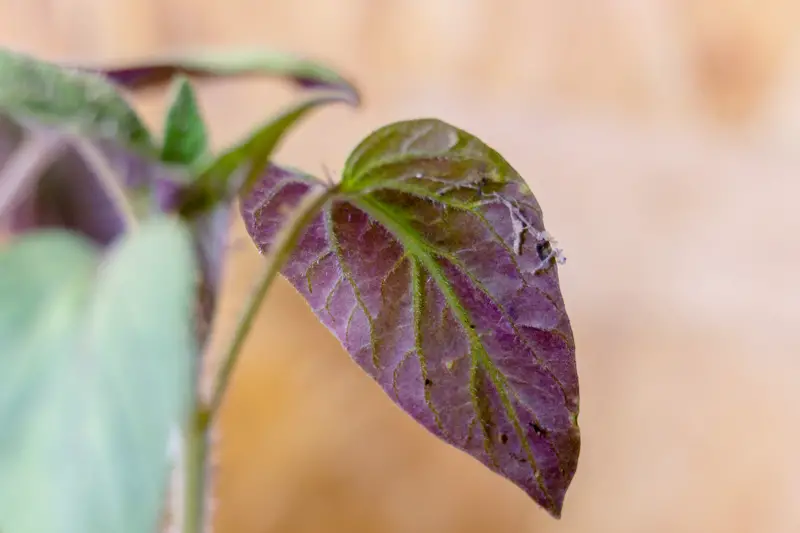
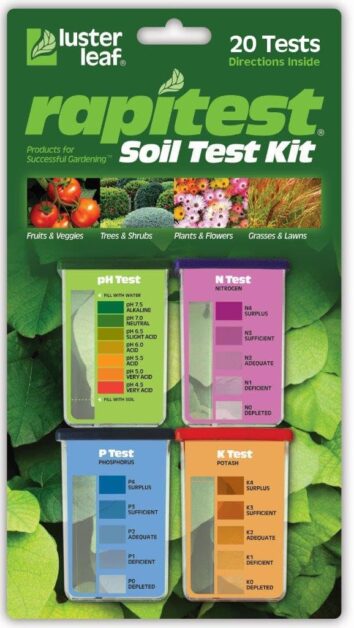


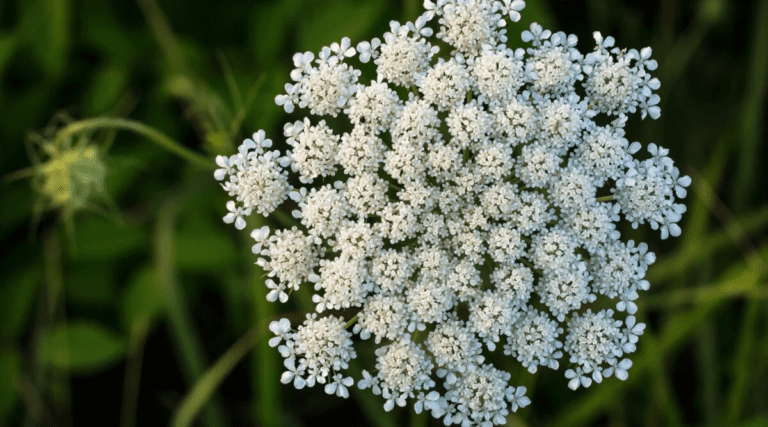
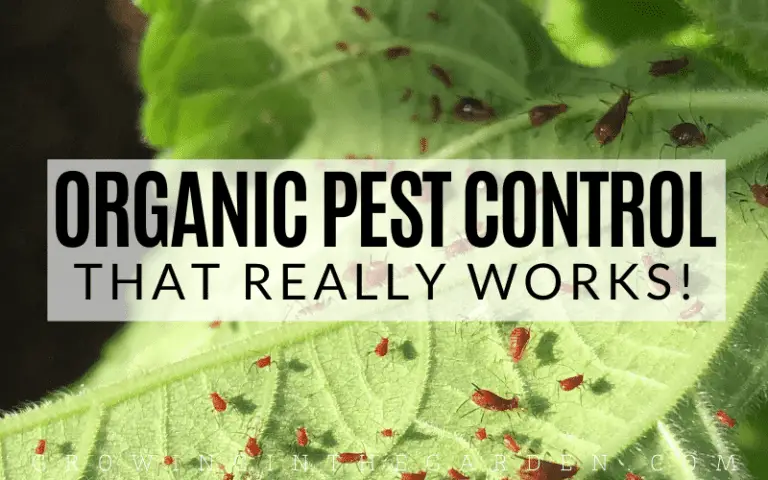

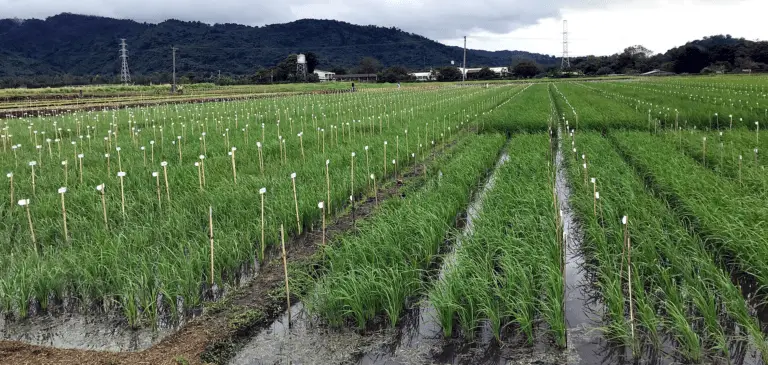

Самые актуальные новинки индустрии.
Важные эвенты самых влиятельных подуимов.
Модные дома, торговые марки, высокая мода.
Самое лучшее место для стильных хайпбистов.
https://metamoda.ru/moda/599-doja-cat-vyzvala-bezumie-v-tope-i-yubke-iz-pishchevoy-plenki-s-rezhisserom-vetements-guram-gvasalia/
Очень актуальные новинки модного мира.
Важные эвенты самых влиятельных подуимов.
Модные дома, бренды, haute couture.
Самое лучшее место для трендовых хайпбистов.
https://metamoda.ru/moda/599-doja-cat-vyzvala-bezumie-v-tope-i-yubke-iz-pishchevoy-plenki-s-rezhisserom-vetements-guram-gvasalia/